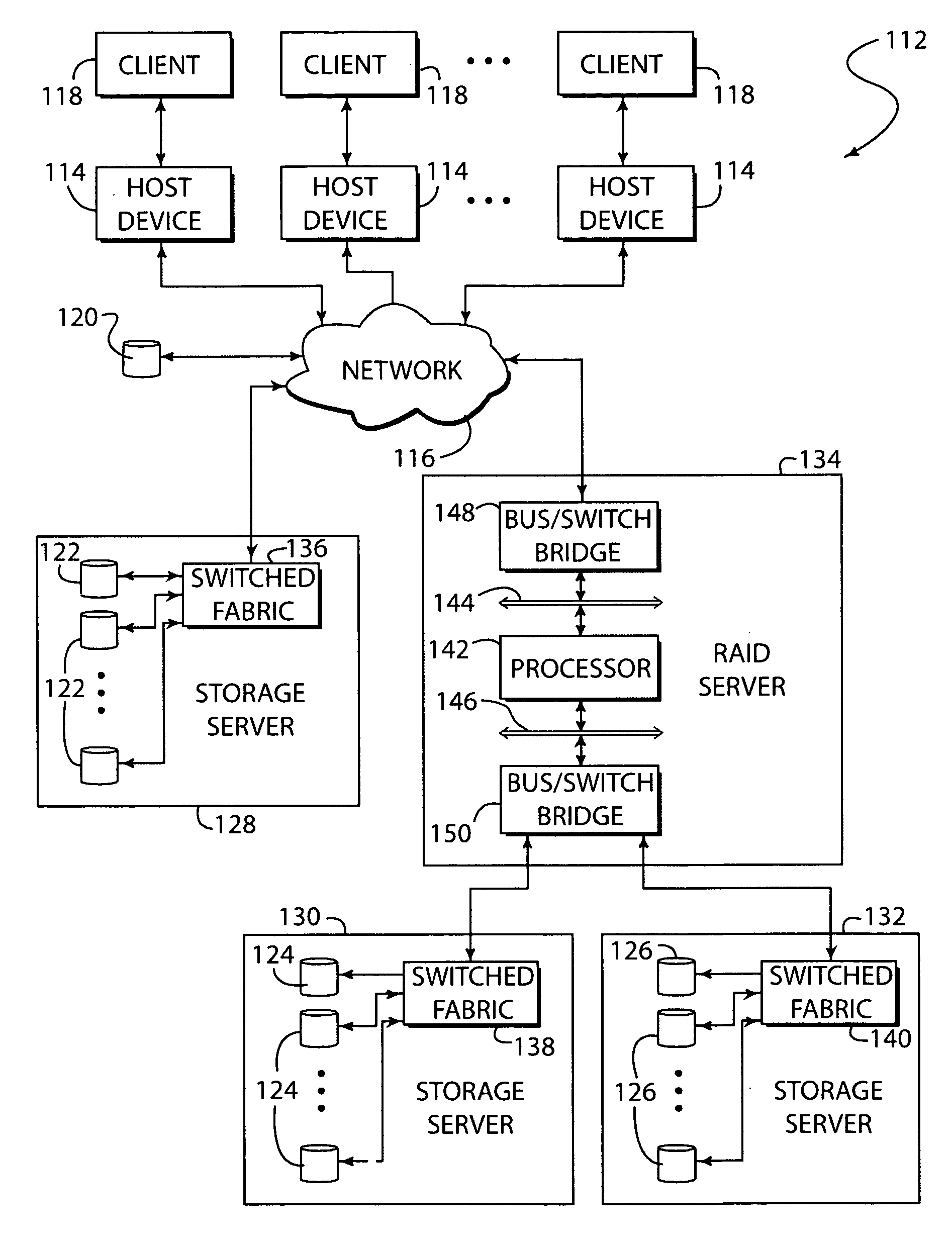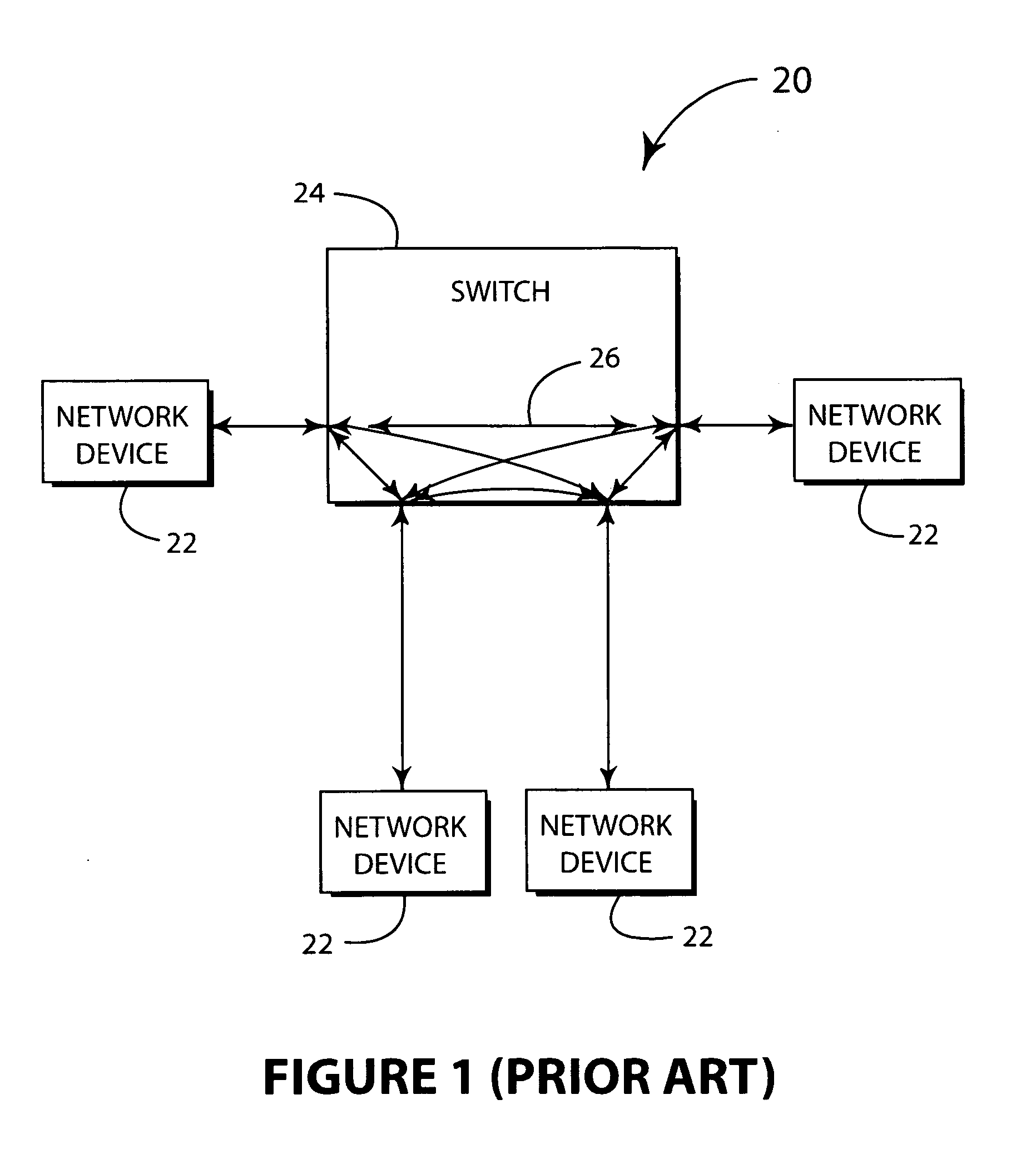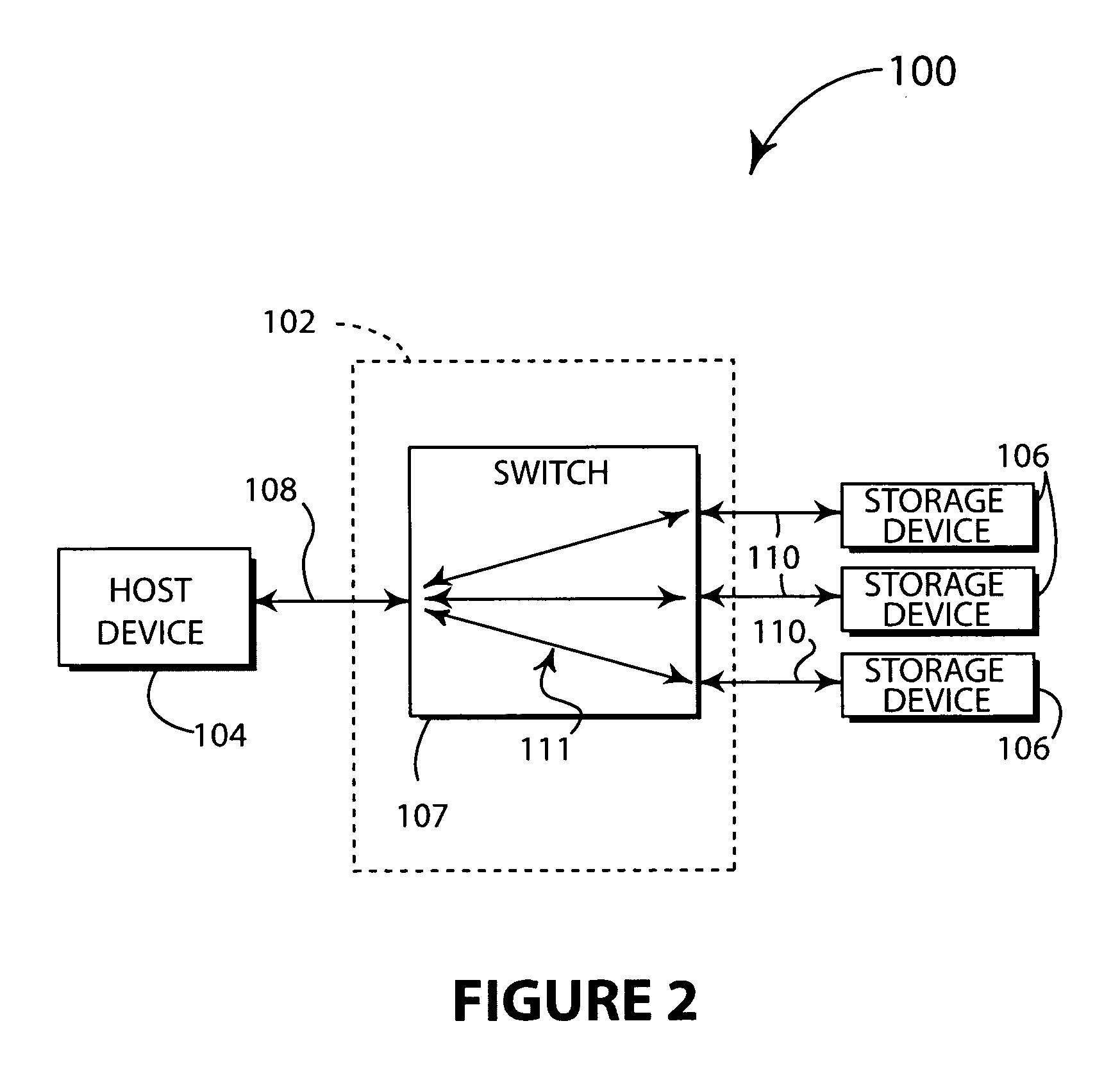[0010]The present invention utilizes a switched fabric architecture, such as
Fibre Channel or
InfiniBand, rather than a shared bus architecture, such as
SCSI or FAL in combination with PCI, to access local storage devices, such as hard drives. In this manner, the storage device(s) and
host processor(s), within a
personal computer (PC) or storage
server or other
data processing device, do not have to arbitrate for control of the shared bus(es) and then wait for their turn to transmit data across the shared bus. Instead, each storage device and the
host processor sends message packets through an internal switch (the switched fabric), which forwards the message packets to the intended recipient. The initiator (the storage device or host processor) of a message packet establishes a data transfer path through the switched fabric to the recipient in much the same way that networked devices (host devices, storage servers,
client devices, etc.) in a
storage area network (SAN) communicate with each other through external switches, routers, hubs and other networking devices of the SAN. Such a data transfer path can be established between a storage device and another component inside the
data processing device generally simultaneously with another data transfer path(s) through the switched fabric. Thus, the invention has the bandwidth and speed benefits of switched fabrics compared to that of shared buses.
[0011]The invention also has easy upgrading and scaling benefits not available with shared bus architectures, because the connections to the switched fabric do not all have to be alike. Instead, the switched fabric includes different types of connections. Thus, different combinations of host devices, switched fabric and storage devices may be made. Any number or type of host devices and storage devices may connect the switched fabric for each of the host devices to be able to access each of the storage devices. Upgrades to or replacements of host and / or storage devices may be made without having to change other devices. Likewise, the switched fabric, itself, may include one or more switches in a variety of combinations, which can be upgraded or replaced without having to change the host devices or storage devices.
[0012]Additionally, the invention avoids cost and size disadvantages of conventional switched fabrics because of current advances in
semiconductor fabrication that enable the integration of large numbers of components into a single
integrated circuit (IC)
chip (a.k.a. “
system on a
chip”). In this manner, the
physical space required by the invention inside the typical housing of the
data processing device is about the same as that required for a shared bus. With several of the switch components integrated in a single IC
chip, the overall cost is about the same as that for a shared bus.
[0013]The invention also enables certain simplifications from conventional switched fabrics. For example, in a storage
server, the various storage devices typically do not need to communicate with each other, so it is preferable that the switch not support the ability to establish communication channels directly between those ports that interconnect between storage devices, thereby simplifying some of the required circuitry in the switch. Additionally, since the storage devices generally need to communicate with the host processor(s) at about the same time to satisfy simultaneous storage access requests, the ports that connect to the storage devices preferably have a lower data transfer speed than the ports that connect to the host processor(s). In other words, the ports that connect to the storage devices may have reduced functionality compared to the ports that connect to the host processor. Also, since the storage devices typically communicate with the host processor at about the same time, and since the port that connects to the host processor is faster than the other ports, each port is typically utilized to about its maximum bandwidth, or data transfer potential. In this manner,
overall efficiency of the switched fabric is maximized.
[0015]The storage network preferably further comprises a second host device connected to the switch at a second host-side link, similar to the first host-side link. Thus, the
switch matrix can establish communication channels from either host device to any of the storage devices for transferring data therebetween. The data transfers may even be performed simultaneously. Additionally, the switched fabric preferably further comprises a second switch, similar to the first switch, connected to all of the host device(s) and the storage devices, so the host device(s) can access the stored data through either switch to the storage devices. In another alternative, each storage device preferably connects to two of the storage-side links, either in the same switch or in two different switches, so that the host device can access the storage device through either storage-side link. Such redundancy, either in the number of switches or the number of links to the storage devices, assures that the stored data will be accessible by the host device and increases data
throughput.
 Login to View More
Login to View More  Login to View More
Login to View More 


